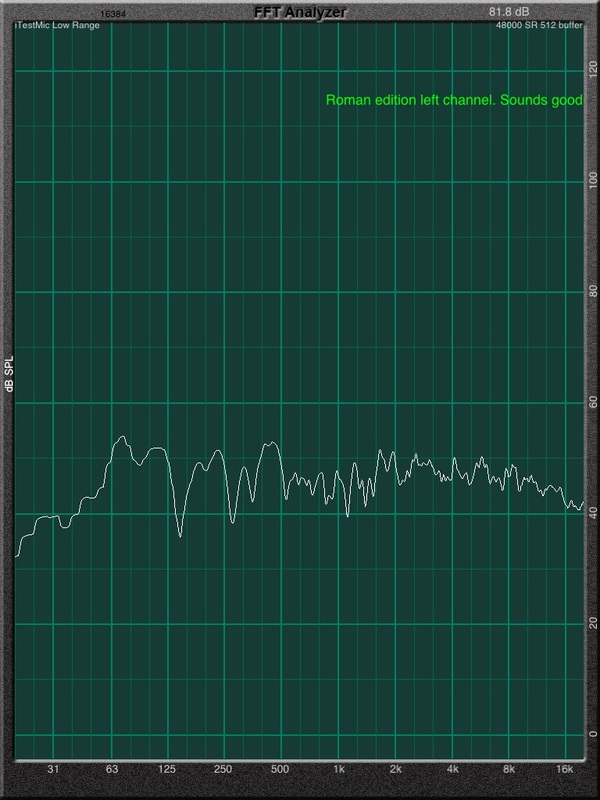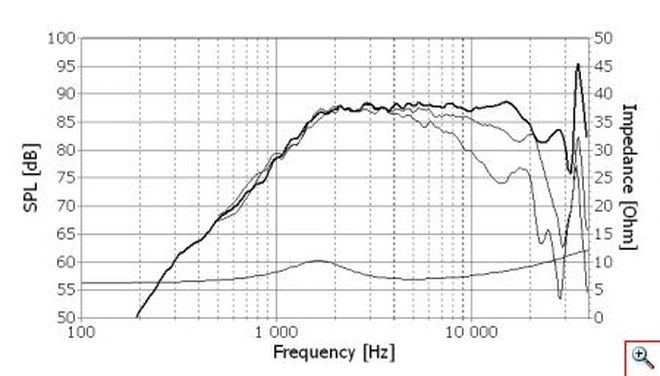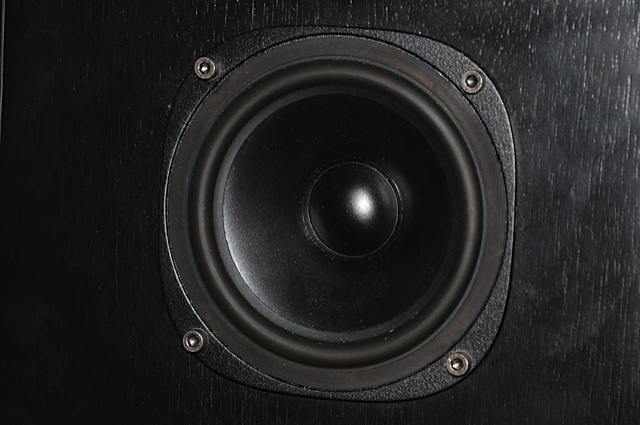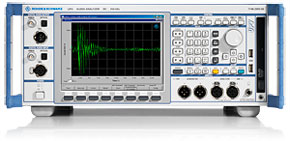|
If you have been following this blog recently, you would have noticed me mentioning the names of Brad Serhan and David Allen who were kind enough to help us with the listening session of the new Kronos by Kyron Audio at Len Wallis Audio a couple of weeks back. Following this chance encounter, I was invited to give an opinion on a bespoke pair of speakers that these two gentlemen designed for an overseas and wealthy client. This client had Quadral speakers and was interested in a little know Finnish brand, Penaudio, but eventually convinced B.A.G. to design a pair of speakers that would use similar drivers to the Penaudio and a ribbon tweeter, as a link to the Quadral he enjoyed listening to previously. Now, a bit of background: Brad was one of the founders and is still the designer behind Orpheus speakers, a very famous Australian brand and works for other brands no less famous on the local scene as consultant/ designer for hire if you want. He has been designing speakers since 1984, same year I introduced Microphase back in France: good omen! David on the other end is a Hifi enthusiast and has been for quite a long time. He is also more of a business man than a designer, although he told me that he had once 15" subwoofers embedded in the floor of his living room! So, we have a lot of talent and experience behind this new venture: Brigadier Audio Group. We had a first listening session at David's place in Walsh Bay, where we used only digital files from David's computer, Spotify Premium and FLAC files from my iPhone. We had other Hifi geeks joining us and we had a great time! These speakers work, period and they are exquisitely crafted and finished: High WAF, bravo! Interestingly enough, I have not been given any specifications for these speakers. I have only been told about their genesis, the way these particular drivers ended up being used, some of the challenges along the way (!), but no frequency response or impedance curves. I had only my ears to judge of the result! It was a very interesting and fun exercise... After an hour or so into this first listening session, I identified two areas for potential improvement, both to do with the way the drivers integrated with each other at the two cut-off frequencies of the filter, which I also identified correctly. We listened to more music, drank some more wine (great choice, David, btw...) and had more conversations between the very seasoned members of the audience and then we eventually had to split. Brad and David decided then that they would work on my comments and would organise a second session later on, probably at Brad's place! And we did earlier this week. Trust me, these two guys know their trade, as it took them only a few days to confirm my findings, think about how to improve these speakers by tweaking the filter appropriately and voilà! For the second listening session, we had David's amp and streamer, Brad's Macbook for digital files and I was convinced to bring my very own OPPO player. Sorry, no turntable, no valves this time around, but eh we are in the 21st century after all! Here are some of the stuff I brought we listened to: Well, what can I say? In a nutshell, I really like these speakers. They are really accurate, speedy, they image very well, specially being quite large and the bass is extremely tight, although they are bass reflex, with very low distortion and coloration.
Now, I need to confess something: I don't normally like metal cone drivers and these 6.5" SEAS Excel drivers have magnesium cones. I do like ribbon though and this one from RAAL is really detailed and smooth, which is not a given for that type of driver. Same tweeter as the Kaiser speakers that I like a lot, by the way! Crossover frequencies are 250Hz and 3.2Khz approximately. The cabinet is a work of art both externally - that you can see for yourself from the photos - and internally: The cabinets are made of a double layer of MDF and ply separated by a viscous compound (can't tell you, would have to kill you...). The drivers are mounted to the internal cabinet and there are two separate chambers for the midrange and the woofer, both bass relax tuned. The two 6.5" drivers look the same, but are actually two different models with different magnets, voice coils and parameters ((can't tell you more - see above...). Nice terminals, good internal wiring, it is all done by the book! And not only does it show, but you can hear the care taken in the design of these speakers! Well done! I sincerely hope that this one off will trigger a suite of new commercial releases. I have been arguing about using a paper version of that midrange driver in future designs: time will tell, stay tuned! During the last stages of our conversations, and after finally finding the real configuration for the Integrales crossover, Perry G shouted a last letter to PE Leon in the hope, I guess, to see our efforts vindicated. And this time, he got a response from a newly appointed export manager, promising to send the proper schematics, as soon as PE Leon came back from a trip. Although at first, Perry though that might well be another dilatory measure, he was quite surprised to receive that information a couple of weeks after, without to have to ask for it again... So, Perry was quite chuffed, and I was quite happy that this beautiful vintage document - nobody was using CAD then - which, after a bit of deciphering, proved to be exactly what I revealed in Episode 6.
So, it is a great story with a happy ending and I hope that Perry will now enjoy his renovated speakers for years to come. I have been told that he might even put his beloved Audio Research amp in service, after having replaced all the valves and put the whole thing through a serious burn-in session! Hopefully, we will hear from him about the renewed pleasures of listening music on a fabulous set of vintage HiFi! I hope you have enjoyed our journey and the story and would welcome any other enquiries into helping other vintage enthusiasts willing to restore or upgrade a beloved pair of speakers. After Perry's elogious email, I was obviously quite happy with the result, and I thought it would be good to review everything to document the process and make sure we were the closest possible from the original. During that process I realised I had possibly made a mistake by positioning the resistor network BEFORE the filter cell, rather than AFTER as per diagram above, which is more "textbook" if you like. This topology gives the ouput of the cell a more stable impedance and make it easier to tune the cut off frequency of each cell.. We tried various iterations of this topology, swapping the resistor values to adjust the relative levels of the midrange and tweeter, and I guess I confused Perry quite a lot in the process, without necessarily getting a better result on listening tests. The FFT above gives a good indication of the quite good response and is consistent with the listening tests Perry was reporting back to me. Obviously, I had to trust him entirely on his ability to remember how the speakers sounded more than 10 years before, but I believe that if you are familiar enough with a particular set up and a few recordings, you can have a fairly good assessment of the result you are after. But a few days later, we had a breakthrough, actually two...but let's start with the cruncher! Perry had spotted on eBay another pair of Integrales for sale in Canada, and I think at one point he may have been tempted to buy them...but in his infinite wisdom, he had the genius idea to ask the seller for a photo of HIS crossover and the seller kindly agreed! The most interesting thing about this photo is the resistor on the top right: it is not quite as burnt as in Perry's speakers - maybe the party didn't go as long, or the music was played as loud, or they ran out of beer!!!! - who knows? Nevertheless, it means that this resistor should have been specified with a higher poet rating in the first place, and we will understand why soon! The other good thing about this photo is that the filter has not been tampered with and is obviously as per the original design. So, then I spent some time decrypting it and came up with a new schematic - see below: From this diagramm, it is easy to see that that R1 takes half of the power going into the midrange and should have been specified as a 10w at least, and in doing so, I would not have a chance to play and make anew friend across the Pacific Ocean! The good news are that when Perry had implemented this new crossover, he was on top of the moon with the auditive results, like being reunited with an old love! Here are the corresponding measurements: We have not quite figured out why there is so much difference between the two speakers, but one suggestion is that one speaker is positioned in a corner of the room where the other one is not. Well, you see, after more than six months of correspondence, trial and errors and a bit of luck in the end, we managed to bring these PEL Integrale back to life. Perry is now in the process of getting his Acoustic Research amp back to its original grandeur and I have not heard if it is back in service or not, but that should give another level of smoothness to the sound of these iconic speakers.
Now I promised you that there was a final twist in the story...well I will keep that for our next and last episode 7, next week! Stay tuned... At that stage, I thought I had enough information to come up with a proper schematic of how and why. the filter should be wired. This wiring diagram uses all the right components, and are properly allocated to the right filter cell. A few calculations confirmed that the woofers were cut off at 400Hz and the tweeter at 6 KHz, which souns quite high, but I personally like to use a higher cut off frequency and also the curves I found for the tweeter were consistent with this design decision. The midrange is not filtered in the treble as it gently rolls off naturally I suspected, as I could not find any measurements for the SEAS midrange P14RC4, pictured below as well as the mighty FOCAL 8C412 woofer. I have since found a data sheet - which confirms my guess - here: http://www.seas.no/images/stories/vintage/pdfdataheet/h0522_mp14rcyp.pdf By the time Perry got a chance to rewire his crossovers to this schematic, he also had received his iTestMic and we moved on to using the FFT measurements: And I got this lovely email with this FFT photo - I have to say I was quite chuffed...:
"This Jean-Marie is the one that sounds the best by far. It was immediately obvious as so superior to the "correct" tweeter phase which was supposed to be inverted according to the very first schematic from PEL. Of course that schematic was for an old version of the crossover which was not the same as mine. The white curve is the "inverted" phase while the orange curve is the "correct" phase. You cannot believe my happiness after so many years of trying and giving up, tearing apart and cobbling back together, sure that this would be the last time. Hours on the internet corresponding to people who didn't know anything. Suggestion after suggestion. Now finally, this is it. How can I thank you enough? You are a freaking speaker genius.!!! (bold inserted by author...)" Perry G. Although the saga continued for a while more, let's leave it at that for today! I personally use this fabulous little device to design speakers and measure them (obviously not to make coffee...lol) This, together with a decent microphone that Audio Tools can supply and an iPad, you are very well equipped to assess the performance of a speaker or its individual drivers. At 600$, it costs the same as a vintage bottle of Ducru Beaucaillou, my favourite Saint-Julien - see www.ourfrenchimpressions.com for more details - and it lasts much longer! If you are not a professional user, then you might want to go back one step and use their iTestMic for about 200$ I recommended to Perry that he buys this more affordable version and he did! It is really a cute little device and it has given us a way to compare measurements across the Pacific Ocean. That's it for the hardware, but obviously what makes the system complete and useable is the App. This is quite a smart product, as you can buy only the measurement modules that you need and they are usually around 20$ each. Even if you were to buy all of them, I think it would set you back maybe 400$ and you would have a complete set of tools very close to the 20,000$ HP3582 I used to use in the 80s, or the 40K$ for a Rhode & Schwarz UPV analyser (but this is the ultimate machine and I do dream to own one, if I were to become an active speaker designer again! I have used a measurement method for many years which is not textbook at all, but which has given me very good auditive results without resorting to an anechoic chamber. I won't reveal all the details here, but let say that these measurements are made in the listening room, and, as such, give a realistic measure of the behaviour of the speaker under test in to a REAL environment. You can see on the curve above that this speaker is flat in the room from30Hz to 20KHz =/- 5dB and roughly =/- 3dB from 300Hz to 12kHz, and trust me, it sounds spectacular! I am awaiting a new prototype that should improve the lower medium down to 150Hz for a better match with the active subwoofer, but I won't be able to talk about this for another month or so, due to confidentiality arrangements with my client.
One of the first pair of speakers that really got me thinking and thought were beyond anything I had heard before were the Elipson 4040, made out of plaster and of two separate elements, one sphere for the medium and treble and one column for the subwoofer. It ended up being used as a monitor for the French National Radio, ORTF. The clip below encapsulates the technical prowesses of Joseph Leon, its founder and chief engineer, as well as his "form follows function" phylosophy. I was to try to duplicate this concept in the 80s in a much smaller package, intended as an upgrade to the basic loudspeakers supplied with the MIDI systems, all the rage at the time, because of the smaller size of most modern appartments, but also because they incorporated the new CD technology in a compact system. |
AuthorBorn in France, well travelled, relocated to Sydney in 1997. Archives
July 2023
Categories
All
|




























 RSS Feed
RSS Feed
